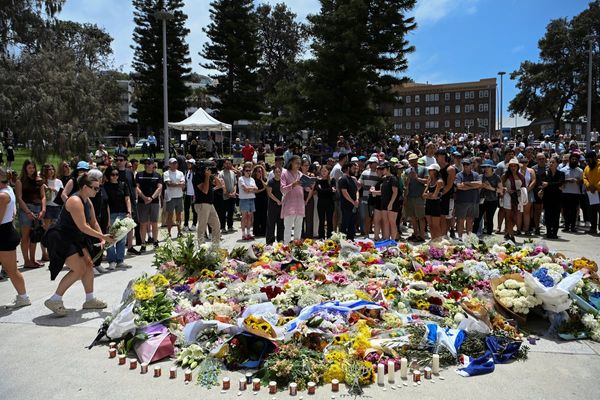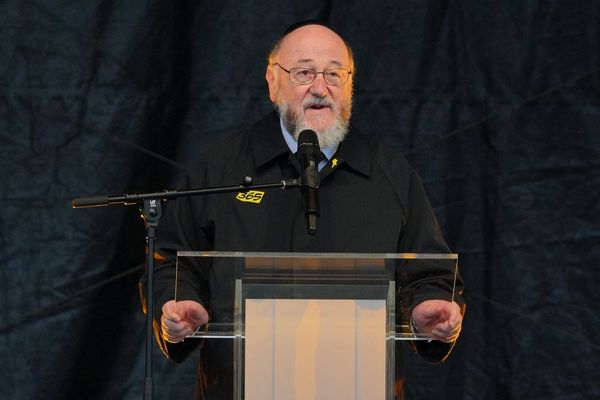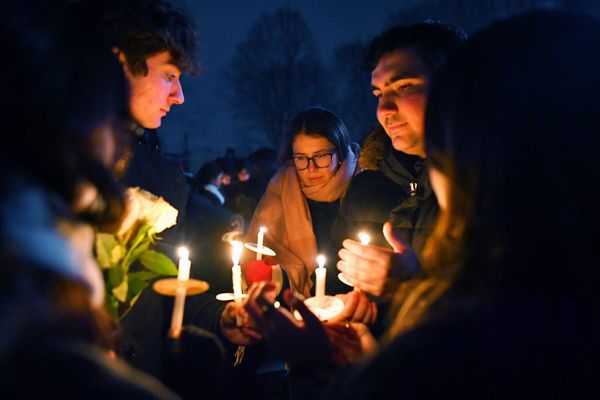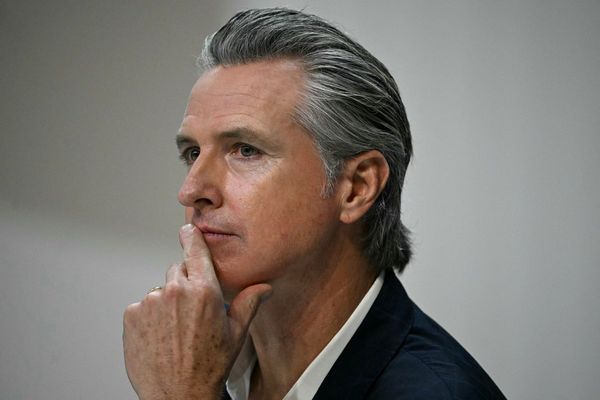
More than 11,000 people crammed into Bradford’s City Park last Friday, on a frigidly cold January night. Hats were on, coffees were in hand and fingers were crossed as Bradfordians waited to see the year-long city of culture celebrations kick off with Rise, a fusion of music, magic, poetry and performance.
Banners announcing “This is our time” hung around the city centre, but there were also constructions sites, messy reminders of a huge pedestrianisation project that is yet to be completed. And the nearby Odeon cinema still hasn’t been transformed into the promised Bradford Live music venue. Both were supposed to be ready in time for Bradford 2025’s launch. Nervous guides told journalists to watch their footing on the icy pavements; nobody wanted a misstep. Not now.
If there was nervousness around Bradford, it was for good reason. My home town isn’t like its other northern rivals: it doesn’t have the swagger of Manchester or the sheen of Leeds. In the popular imagination, it is a place synonymous with post-industrial decline, Don McCullin’s photographs of decay and destitution, and the long-lingering “segregation city” tag powered by a legacy of far-right activity and race riots. Rise was billed by its co-creator, Steven Frayne (better known as Dynamo), as “Bradford’s equivalent of an Olympic opening ceremony”, but on Friday it also functioned as a pep talk for a city that might have long lacked self-confidence but never cultural capital.
If you grew up in the city, Bradford’s cultural history was drilled into you from an early age. The names Forster, Priestley and Brontë were inescapable, as was the annual school trip to the Industrial Museum to relive life as it was when Bradford was a booming textile centre.
But Bradford has also always been radical. It was the place where the Independent Labour party was founded (a mural still adorns the outer wall of the Bradford Playhouse), while in the 1970s the Asian Youth Movement and Bradford Black Collective confronted the far right. The city’s cultural institutions came to embody that radicalism: the Peace Museum grew out of the peace studies department at Bradford University. Cartwright Hall, which sits at the centre of Lister Park, is home to one of the biggest collections of Black and Asian art in the country, compiled at a time when – unlike today – many institutions were completely dismissive of Black British artists.
All the previous city of culture winners (Derry, Hull, Coventry) have used their 12 months to “shift perceptions” created by conflict, cruel caricatures or, in some cases, pop culture itself. Bradford is no different. But what makes Bradford 2025 exciting isn’t only the opportunity it presents for the city, but the way it’s being carried out. In the 1990s and 2000s, it often felt like the city’s contemporary culture – such as the Mela festival, a South Asian cultural celebration in the hot days of summer; Kay Mellor’s TV series Band of Gold; or the sub-low frequencies of bassline house – were minimised rather than embraced. In early 2010, Bradford international film festival hosted the premiere of Chris Morris’s suicide bomber comedy Four Lions, arguably the high point of an event that was culled in 2016. That promoted outrage in the local press, as did a performance artist who came to the city in 2009 and tried to provoke an epileptic fit. If art was too risque or not seen as the “right” kind of culture, threats of protests followed.
But Bradford 2025 has worked hard to reflect the city’s culture now. Creative director Shanaz Gulzar (who lives in Keighley) has put together a programme that doesn’t just lean into the tried and tested big names. Yes, David Hockney and the Brontës feature, but so does bassline house remixed with an orchestra, while the working-class plays of Andrea Dunbar are placed, as they should be, in the centre of the city’s literary landscape.
City of culture wins are often seen through the prism of job creation and capital investment. Liverpool’s European capital of culture year in 2008 brought in £800m during its 12-month run – a significant return on an investment of £122m. In Hull, the numbers were similarly impressive: £219m of investment and 800 jobs created. Bradford will receive £15m from the government, producing an estimated £140m boost to the local economy.
But talking to Gulzar at the launch, she told me the things she is most excited about are capital projects that should give Bradford’s cultural institutions more longevity: public toilets at the Brontë parsonage, or facilitating the Peace Museum’s move to Salts Mill. The budget is being used to plug some pretty big holes, at a time when local councils are completely removing arts funding and securing grants for capital projects is getting harder.
The other lingering element of the city of culture will be “legacy”, a slippery word that can’t solely be quantified in facts and figures. When the city of culture project was announced in 2009 by Andy Burnham after Liverpool’s success, he wrote: “What’s most striking is [Liverpool’s] renewed sense of pride and confidence. Culture has helped put the heart and soul back in one of Britain’s oldest and proudest cities.”
On Friday night, you could see some of that confidence being created in real time as Kirsty Taylor stood in the middle of City Park and performed poetry that served as a love letter to her home town. Line by line, Bradford – through the city of culture – began to take control of its own story.
Lanre Bakare is an arts and culture correspondent for the Guardian
Do you have an opinion on the issues raised in this article? If you would like to submit a response of up to 300 words by email to be considered for publication in our letters section, please click here.







